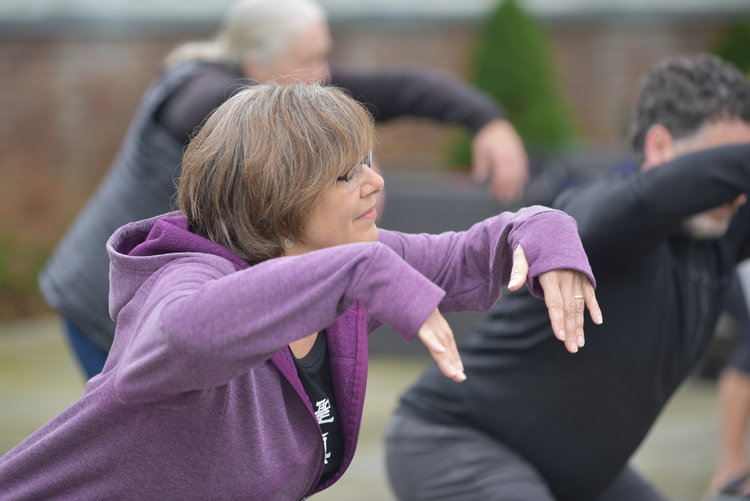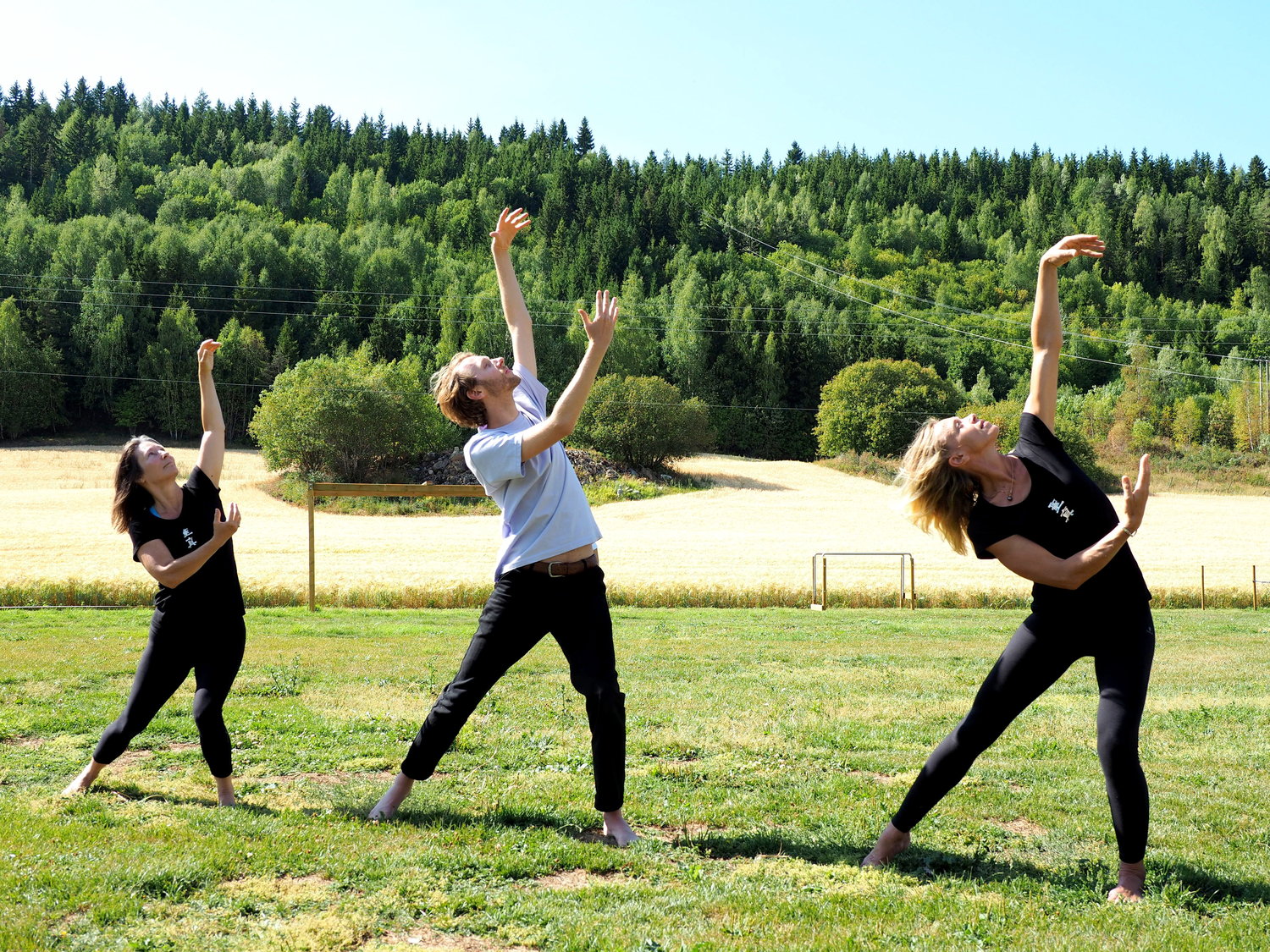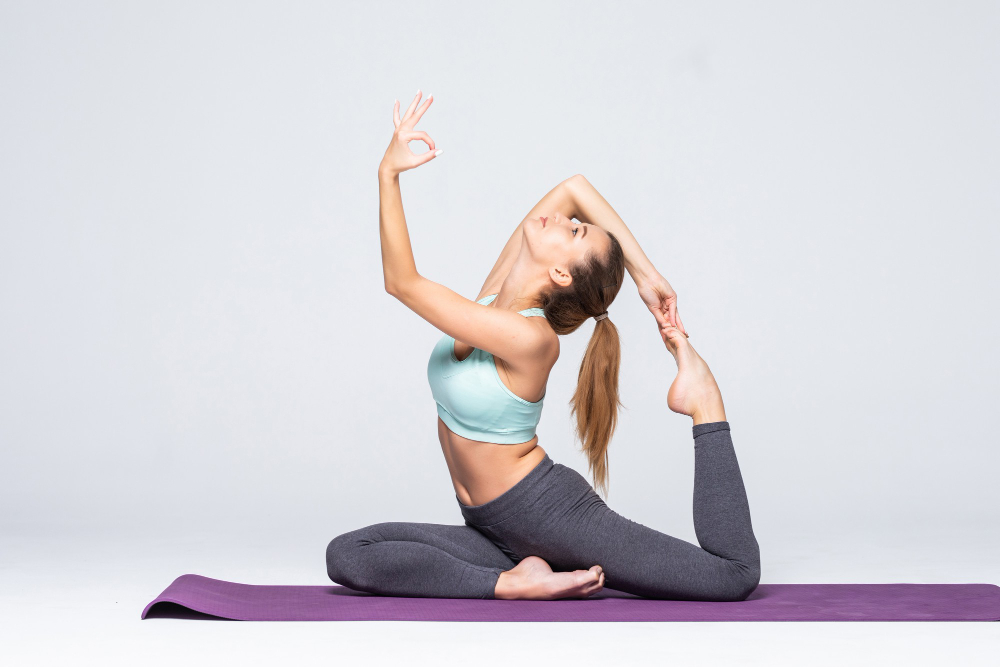
We’ve all heard of the benefits of meditation, and there are many. Yet, for some of us, the biggest roadblock is the phrase, “But I can’t sit still.”
There are too many distractions, we live in a hyper-connected world. The movement of cars, the crowds of people, and the pings of our phones make it next to impossible to quiet the mind. For people who struggle with ADHD or ADD, the struggle is real, if not downright torturous.
Luckily, there’s another form of meditation, one where movement and meditation can be combined. It’s akin to hitting two birds with one stone, so this is something people who multitask will love. It’s called moving meditation or meditation in motion. This is something anyone can practice, read on to find out how.

What is Moving Meditation?
Moving meditation, also known as meditation is motion, is a meditative state, a shift of consciousness while doing simple movements. According to Healthline, it is an active form of meditation, where movement guides you into a deeper connection with your body and the present moment.
It involves moving slowly, firmly, rhythmically, using correct postures, and deep continuous breaths. Some popular forms of meditation in motion are yoga, tai chi, and qigong. But it can also come in a form of a functional, day-to-day activity like walking, mindful cleaning, and even dancing. As long as the physical movement allows you to shift your mind to focus on the moment in a non-judgmental way, it can be used for meditation.
This is a great practice for people who want to channel inner peace, or develop more body and self-awareness. And it costs next to nothing. All you need is to carve some time and space for moving meditation. There are many types of moving meditation. We will discuss each type here, and see for yourself which one fits your lifestyle and personality the most. Hopefully, you will find one form you will be drawn to.

Types of Moving Meditation Practices
Walking Meditation
According to Mind Works, walking meditation is great for beginners since walking is something familiar. We do it every day, and can easily be squeezed into our busy calendars.
So how does one walk while meditating? Choose a peaceful place, preferably quiet, and uncrowded. When walking, direct your attention on the movement of your legs and feet. Breathe deeply. Notice how stable the ground is beneath your feet. Focus on the sensations and feelings as each foot touches the ground, your shoes on the dry leaves, the crunching sounds, the dappled sunshine on the trees, and all the little details we don’t see because we’re always thinking of something else. Vietnamese meditation master and peace activist Thich Nhat Hanh put it this way: as we walk, imagine that we “print peace, serenity, and happiness on the ground.”
This is perfect for solitary practice, and something you can integrate easily in your daily routine.
Yoga
Yoga has become synonymous to meditation, only because of its sheer popularity. It is estimated that around 300 million people practice yoga worldwide. But meditation is just one of its components. Meditation, physical exercise, breath control, relaxation, and nutrition make up yoga as a system to develop harmony in the body, mind, and environment.
Through a series of poses, stretching and breathwork, yoga focuses on strength, flexibility, and breathing to boost physical and mental wellbeing. There are many forms of yoga, some are more physically-challenging involving flexibility and balance, others more on the meditative side. So it’s all just a matter of finding the right form.

Tai Chi
If you’ve seen a group at a park near you, where the people move their hands gracefully as if doing martial arts in slow motion, that’s tai chi.
Tai chi is an ancient form of exercise that has roots in Taoism. With a history of over 2000 years, Taoism’s main focus is balancing or harmonizing the yin and yang, or the passive and active principles. Balance is achieved through flowing, rhythmic deliberate movements, the way rivers flow, or the trees sway with the wind. Tai chi resembles kung fu, and can be used with or without weapons.
Essentially, tai chi involves performing relaxed, fluid movements with a calm, yet focused mental state. So you are calm, yet alert, yin and yang. So the next time you see the tai chi group at the park, consider joining them for a start. All you need is to come dressed in a comfortable clothing, and the willingness to learn the art.
Qigong
Like tai chi, qigong originated from China. But whereas tai chi is more of a martial art, qigong is a foundational component of TCM or traditional Chinese medicine.
According to TCM, qi or energy flows through our bodies. We feel at our best when qi travels freely, but feel under the weather when the energy becomes stagnant or blocked. Thus, we need to practice qigong (qi means energy, gong means cultivation) to remove obstacles and to keep the qi strong and flowing. This is done through a series of postures, movements, breathwork, and meditation.
Qigong is fast gaining traction in the Western world, with popular celebrities like Oprah Winfrey and Tiger Woods as regular practitioners. Qigong is also unique in its interpretation of animals. Many qigong poses imitate the movements of animals like geese, tigers, dragons, and cranes.
Like tai chi, qigong can both work in individual and group settings.
Sheng Zhen
Sheng Zhen is similar to tai chi and qigong in that it’s a series of gentle, slow movements accompanied by breathwork.
The difference lies in the core or center of the practice. Founded by Master Li Junfeng, a qigong master, world-renowned wushu coach, and film actor, Sheng Zhen places unconditional love as the highest and most sacred form of truth.
“It means love of self, love of others, of nature, and the earth, and the universe,” says Roger Ty-Simone, a certified Sheng Zhen instructor, and a member of the International Sheng Zhen Society.
Sheng Zhen Meditation offers a wide variety of both non-moving and moving practices. Through a series of gentle and graceful movements, a person can remove negative emotions, gather positive healing energy (qi), and experience a feeling of perfect harmony with the universe. Proper posture, breathing, and purposeful movement, such as gliding of the arms through the air like a butterfly, all go hand-in-hand.
Dancing
You probably took a second look. Yes, dancing! At first it doesn’t seem to have much in common with meditation. But dancing, if it enables you to get out of your head and into your body, can be a relaxing form of meditation too.
Sing along, move with the music. Whether it be electronic music, funk jazz, or a pop song. Let go. The key to making dancing effective as meditation is for you to feel free to move any which way, without any distractions, and most importantly, without judgment. So go ahead, dust off those dancing shoes, and dance.
Mindful Cleaning
Yes, you get to meditate, and clean your house too! Like dancing, cleaning is not popularly known as meditative, but mindful cleaning is actually an old Zen Buddhist practice.
Engaging in mindful cleaning is simple. Rather than think of other things, just focus on the task at hand. Whether you’re washing windows or vacuuming the floor, focus on the movement of your arms and every breath you take. Focus on the sounds, stay in the moment, and allow your body to relax.
As a welcome bonus, you get to clean your space, and cleanliness, as we know, leads to you to be more at peace and at ease with your surroundings.
What are the benefits of meditation?
Meditation has many benefits. Here are some of the science-backed ways our lives drastically improve through meditation.
- Meditation is able to calm the sympathetic (fight or flight nervous system) and activates the parasympathetic (rest and digest) side of the nervous system. Being always in sympathetic mode can lead to chronic stress, which can impact health negatively.
- Meditation has been shown to improve mental health by reducing the amount of cortisol, the stress hormone, in our bodies. Elevated levels of stress hormones in our bodies can weaken the immune system.
- Therefore, doing meditation regularly can help enhance your immune system against illnesses and viruses.
- It lowers heart rate.
- It lowers blood pressure.
- It promotes quality and deep sleep (sleep is essential for strong immune health).
- Meditation can lessen chronic pains and aches.
- It improves memory as you learn how to focus and enhance your concentration.
- It increases self-awareness, leading to better stress and anger management, and improved emotional intelligence.
- Meditation, especially moving meditation, reduces the risk for arthritis and osteoporosis.
- Lastly, regular meditation has been shown to lead to longevity and a better quality of life.
The bottom line
No props, no fancy equipment needed. All you need is time and space to meditate, and a chosen form of moving meditation. Which appeals to you the most?
Remember, all it takes is a good 10 to 13 minutes a day for starters. Consistency is key.
Of course, let’s not forget that meditation isn’t a magic pill to cure all health issues. But accompanied with other healthy habits, moving meditation can help us feel healthier, happier, and be our best selves.
Tags
References:
https://mindworks.org/blog/what-is-walking-meditation/
https://www.shape.com/fitness/workouts/tai-chi-for-beginners
https://theculturetrip.com/asia/china/articles/a-brief-history-of-tai-chi-in-china/
https://www.verywellmind.com/how-long-should-you-meditate
https://www.emedicinehealth.com/yoga/article_em.htm
https://www.urmc.rochester.edu/encyclopedia/content.aspx?contenttypeid=1&contentid=2767
https://betterme.world/articles/moving-meditation/
https://www.yogapedia.com/definition/10629/moving-meditation


0 Comments
Trackbacks/Pingbacks